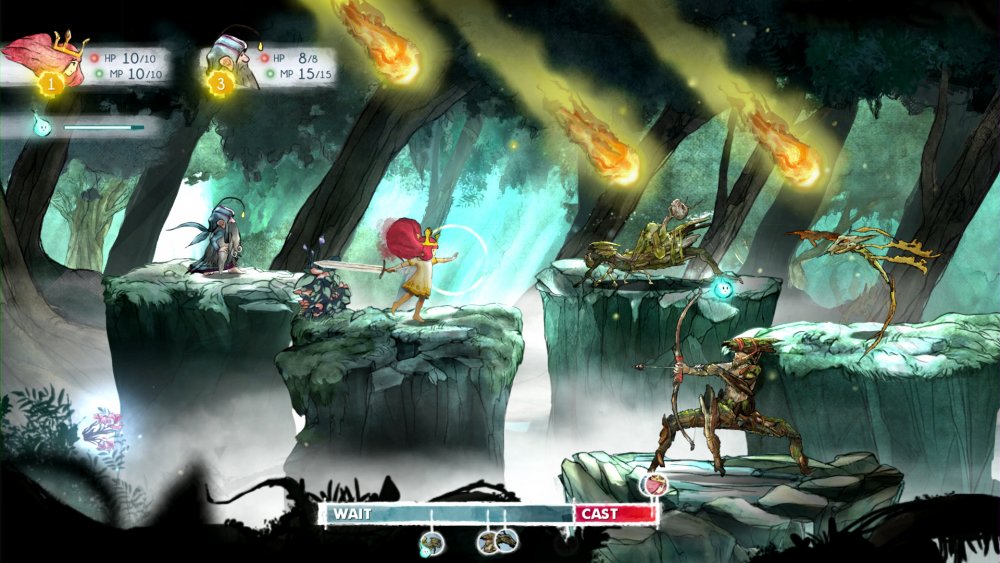

Child of Light is the videogame embodiment of a children's book. Utilizing the Ubi Art framework that powered Rayman Origins and Rayman Legends, it is gorgeous to behold, with a whimsical fantasy art style. The dialogue in the game is presented entirely in verse, which works thematically, but it's rarely as clever as it seems to think it is. Despite this, the story is very enjoyable, if a little thin.
The plot centers around an Austrian princess from the 19th century named Aurora. One night, she falls ill and is all but dead. She awakens in a strange land, meets a wisp named Igniculus and sets off on a grand adventure to find her way home and save her grief-stricken father. Many colorful characters join Aurora, such as Robert, a fiscally-minded mouse with a penchant for archery, and Finn, a dwarf-like fellow with powerful magic.

Combat is turn-based and very clearly inspired by the JRPG series Grandia, where every player and enemy action is represented on a timeline. Once a player or enemy's portrait reaches the "casting" portion of the timeline, the action they choose to take affects how quickly they reach the end of the timeline and take their action. While in the casting area, any ability that targets them will interrupt the action and knock them back on the timeline a good way.
Most enemies also have an elemental weakness for you to exploit, though the crux of combat is buffing your own speed and debuffing the enemy to slow their actions down. You can slow enemies down with spells, or position Igniculus over them to blind them with light and slow them down. Certain enemies will counterattack if you interrupt or use the wrong type of attack against them, which adds another layer to the strategy.
Luckily, there are no shortage of options, as Aurora piles on quite a large number of allies to use in combat. I'd almost say there are too many, since a few serve similar roles. By the end of the game, I was primarily using Oengus and Robert, who are extremely useful for attacking multiple foes, sending them back on the timeline or outright stunning them. I'd only swap in other characters situationally, if I needed a heal, or spells of a certain element to be cast.

Despite seeming promising early on, the co-op in Child of Light is severely disappointing. The second player can take control of Igniculus to assist in puzzle solving and combat. Early in the game, this seems fairly compelling, since there are a few puzzles where use of Igniculus' abilities are instrumental in coming up with a solution. This gives both players something meaningful to contribute, and though simple, working out the solutions in tandem is fun.
Unfortunately, the number of puzzles tapers off severely, and you're left with a second player who can use Igniculus to slow down enemies in combat, which isn't as useful once your party gains a number of debuffing options, or provide emergency heals to a teammate, which is only really necessary once in a while, as healing items are extremely easy to hoard.
It's frustrating because it would certainly be possible to split the player controls between the two active party members in combat, which could make strategic decision-making interesting. As-is, it feels like more of an afterthought.
Child of Light is well-worth experiencing. It fills an interesting niche, since it's a European-style fairy tale told through a Westernized JRPG lens. It also says a lot that my co-op partner, despite getting bored once they didn't have as much to contribute, stuck around til the end.